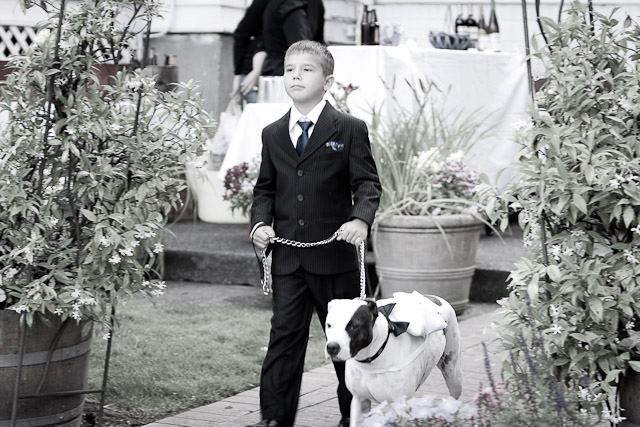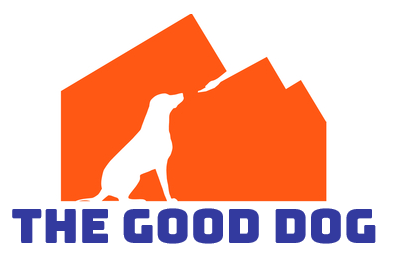|
Leash behavior is always one of the more complicated activities to train and refine as evidenced by the fact that it is one of the activities that you will find most handlers struggle with. The manner by which I correct forging (pulling on the leash) has always worked for me without fail. It has also, without fail, been initially rejected by clients because it is simply an overwhelming amount of work. One can always employ the use of a tool such as a choke chain, prong collar, gentle leader, easy-walk harness, spray collar or shock collar to effect rapid change but they all suffer from the same shortcoming. If you are yanking on a leash, saying "no" or in any other way punishing your dog then you have taken responsibility for its location when you're walking (I.E. He/she doesn't have to think or apply himself to the concept of walking next to you; rather he/she simply does whatever he/she wishes until you correct/inform them). If you simply hold the leash tight so that the dog is held in the same location, then you give them even less responsibility to be aware of their location, because they can simply walk away from you until they feel the leash come tight and then hang on it. So, I treat all of the tools of walking exactly like a carpenter treats his hammer, its useful but unable to build a house without a skilled person to handle it. So, when I approach a session in which I plan to teach a dog to walk I must carefully organize my concepts/plans/priorities.
First, clocks are the bane of healthy leash behavior. When we apply human schedules to leash walking we give up our first and most powerful weapon; the fact that the dog's desire to move forward exceeds your own. This means that the dog is therefore motivated to meet your requirements because you are larger than him/her and are not going to let go of the leash. This means that the dog MUST figure out a way to acquire your cooperation if he/she is to move forward. This simple knowledge that you must cooperate for your dog to achieve his/her goals precludes all other forms of correction, because you can negate your dog's most basic desire in the walking environment (moving forward), without even looking at him/her. This means that the handler must simply change their perspective of walking. The goal ceases to be moving forward, and become the training of your dog's mind the handler frees themselves from their sense of schedule and can now begin to actually correct the forging behavior. The easiest system by which to ingrain the concept into the dog is by thinking of yourself as a very simple machine. You take the leash by the loop and any pressure on your hand breaks you. The more that you can act out this concept the more quickly and finally your dog will alter his/her behavior. So, you're walking along, your hand gets pulled on and you immediately stop without saying a word. The first thing your dog will do is NOT CARE AT ALL. Do not give up. After a couple of minutes the dog should turn to the handler to ask "what in the heck is wrong with you?” Please note: Younger or more imaginative dogs will take longer to become bored or notice that something has broken their handler in the first place, lazier dogs are apt to lie down on the spot and nap (Understanding the correct methods to counter those behaviors or speed the process are too complicated for facebook and are a good reason to hire me). Once the dog has turned around to angrily require why you have suddenly become so irritating and stupid and have stopped walking, you should simply smile at them and pleasantly indicate where they are supposed to be (normally on your left side). Odds are they will immediately answer this information with a statement along the lines of "Why should I care?" and the game begins. See, once the dog as turned to you to discover why you are broken, he/she has engaged their cognitive thought to the concept of where they should be while walking with you (something a choke chain cannot, by nature, do). So, you stop walking, dog says "why human", you say "go here", dog says "why do I care?"...at this point you could make the mistake of attempting to force the dog to care...but then you have, again, taken responsibility for their behavior, so you must simply ignore them. This forces them to recognize/decide on their own (without resentment or resistance towards the handler) that they must cooperate to continue moving. You continue to only, attempt to, inform the dog of where they should be AFTER they have requested the information, by engaging you in some form or another. The minute that they step next to your knee, you can simply start walking again like you're a machine and they pushed the correct button. This creates a concept in the dog's mind that if he pulls on the leash you CANNOT walk further and so they will immediately push the "Restart" button on the ground next to your left foot. Please note: While the first couple of hour long attempts to walk with your dog will be painful and time consuming the dog's learning will be cumulative. Meaning the more you practice it the better they will become and the more quickly they will improve. Within 2-6 hours of practice 90% of dog/handler teams I've worked with can walk with the leash completely loose and tucked into a pocket without any hands on the animal or leash. Under these conditions if the dog feels any tension on the leash whatsoever they will snap back into correct position with their body language proclaiming apologies. The threshold for a skilled team should be such that the leash should never be pulled from the handler's pocket. I have attempted to cover an immense body of concept and of course there will be some rough areas to figure out so please feel free to ask lots of questions. Comments are closed.
|
PC for above picture -
The Journey Photography by Cris. AuthorEllis Gugel received a bachelors degree in Canine Studies from Bergin University of Canine Studies and applies a method that views the dog through a scientific light. It appeals to the higher cognitive functions that allow the dog to become more intelligent and intuitive than was previously thought possible. Archives
September 2024
Categories |
Web Hosting by iPage


 RSS Feed
RSS Feed

